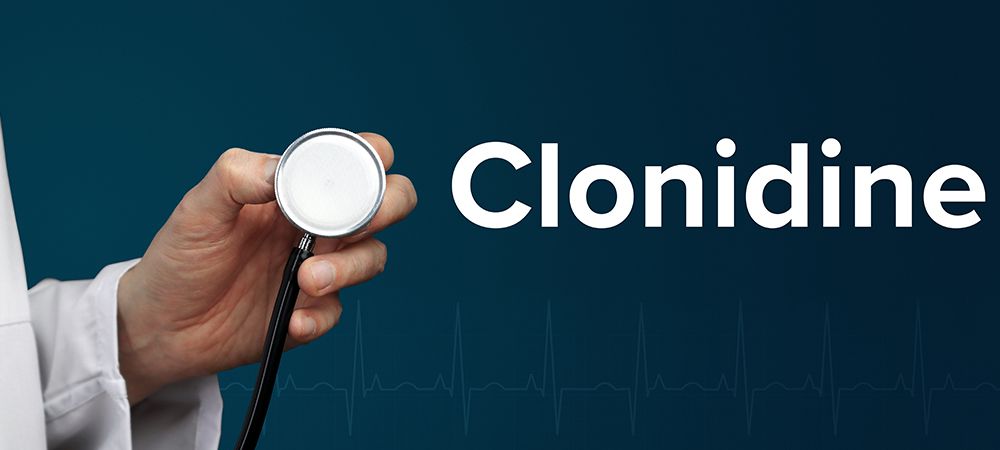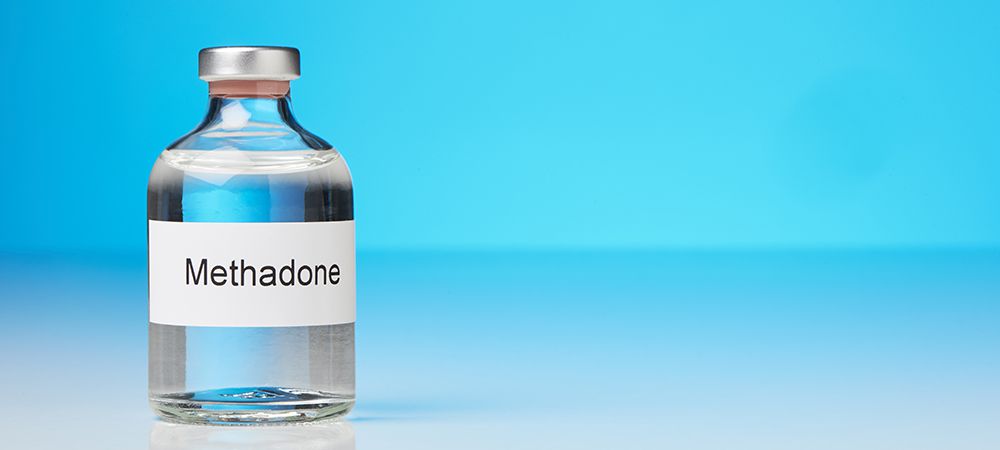How to Get Off Methadone
Knowledge of how to get off methadone is important due to the addictive nature of the drug.
Methadone is a type of opioid doctors use to treat opioid addiction.
Just like other opioids, methadone alters pain signals in the brain. Therefore, it’s useful in medical circles as a drug that offers pain relief.
Typically, methadone usage should happen under the strict monitoring of a licensed medical professional. But there are still cases of methadone abuse and addiction.
Commonly, self-medication is the major cause of methadone addiction in patients. But regardless of the causative element, you’ll need expert help and attention to get rid of methadone.
In this article, we’ll extensively discuss getting rid of methadone addiction. We’ll explore side effects associated with methadone withdrawal and provide effective tips to stop using methadone.
Methadone Addiction: Side Effects, Symptoms and Withdrawal
Methadone is an opioid that has been in use to relieve patients of chronic pain since 1947. With many studies that prove its effectiveness, methadone is effective at relieving pain and treating opioid addiction.
Methadone doses differ for persons and must only be prescribed by trained personnel. The reason for this is the difference in the severity of pain and opioid addiction among people.
So, doctors give prescriptions to individuals and adjust them when necessary. It’s then safe to conclude that there are no same doses for two people.
Opioid addiction is worse than methadone addiction, but neither type of addiction is better. Unlike other opioids, there is a strict regulation on methadone use and prescription. Hence, restricting its availability to only clinics and pharmacies.
Despite the strict restriction, there is still abuse of the drug substance. Even under prescription, methadone abuse by patients is common. Methadone abuse occurs when patients take the substance beyond or below its daily doses.
Uses of Methadone
A major contribution to methadone addiction is its diverse uses. After surgery, doctors prescribe methadone to patients to help relieve pain. Also, doctors prescribe methadone to patients to help treat opioid addiction.
Although all opioids drugs act as painkillers, the effect of methadone on the drug is different. Other opioids bind to pain receptors in the brain and block pain signals. Methadone does this too, but it does this by competing with other opioids.
It means that pain receptors prefer binding with methadone than with other opioids. Hence, leaving the other opioids free in circulation, waiting for excretion by the kidney.
The effects of methadone as a painkiller are slower than other opioids. Hence, in comparison with other opioids, methadone comes with a lower chance of addiction. However, being a schedule II drug, methadone is still hugely addictive.
Methadone dependence and tolerance
It’s hard to discuss how to get off methadone without touching on how it works. Methadone attaches to pain receptor sites in the brain. In doing so, it alters certain pathways in the brain. One of the altered pathways is the natural secretion of endorphin, a natural painkiller.
Over time, the brain adapts to this new way of pain relief, neglecting its natural methods. This is the same with other opioids too.
A specialist may administer opioids in bits to help the brain remember its natural pathways. The process of administering drugs in bits to help reduce their effect on the body is called tapering. To taper opioid addiction, doctors use methadone.
The methadone effect is slower, and its effect takes a long time to kick in. For instance, other opioids are only effective for an hour, but the methadone effect takes 24 hours.
Aside from being long-term, methadone effects are lower than other opioids. So, most patients take more of the substance to feel the effect. This most times leads to abuse and addiction to the drug.
When you abuse methadone, at first, it helps you battle opioid addiction. In the long run, you end up being an addict yourself.
Before becoming an addict, your body starts depending on the substance to function. Dependence means you don’t feel relief until you take methadone.
After dependence, patients start to use a large quantity of methadone that increases its concentration in their bodies. With this, their body will require a higher dosage to attain the initial effect.
Methadone addiction
There are several reasons for methadone addiction. Some experts say methadone addiction is due to its relatively low price. Others say it’s due to its long half-life in the blood. But commonly, most patients suffer from methadone addiction due to prescription abuse.
Methadone addiction is relatively slower than other opioid addictions. It means that one can easily get addicted to opioids other than methadone. Nevertheless, methadone addiction is still a possibility.
There are symptoms of methadone addiction, and these symptoms can be mild or severe. If severe, we often advise patients to contact a methadone rehab as soon as possible.
Common symptoms of methadone addiction include:
- Unnecessary cravings.
- Sweating
- Euphoria
- Chronic constipation
- Low libido
- Hyperalgesia
- Slurred speech.
- Smaller pupil
- Difficulty breathing.
It’s essential to note that the symptoms of methadone addiction will differ for each patient. Likewise, methadone addiction treatment and the approach to stop using will differ for each person.
Related Article: What is a Methadone Treatment Program?
How To Get Off Methadone: Proven Methods
Quitting cold turkey is one of the most common ways of getting off methadone. However, it’s not a safe way of getting off methadone because of withdrawal symptoms.
Withdrawal symptoms kick in about 24 to 36 hours after quitting methadone use. These withdrawal symptoms differ for persons ranging from mild to severe symptoms.
Common methadone withdrawal symptoms are:
- Insomnia
- Runny nose.
- Yawning.
- Depression
- Diarrhea.
- Abdominal cramps
- Sweating
- vomiting
- Muscle aches.
To properly manage your withdrawal symptoms, there are treatment programs in methadone rehabs. Here are the three most popular methadone treatment programs.
Methadone detox
Methadone detox is usually the first answer to how to get off the drug. During addiction, your body relies on methadone for pain relief. It means your body abandons its natural pathways for pain relief.
When you start to treat methadone addiction, you’ll have to stop using the drug. The adjustments of your body system to the sudden methadone shortage are withdrawal symptoms.
Methadone detox is usually the first step in any rehab program in Vancouver and beyond. The sole aim of methadone detox is to reduce your withdrawal symptoms and ease your treatment.
Withdrawal symptoms can be lethal if they’re too severe. For this reason, medical personnel must be on hand to supervise the process. It’s why we always pick medical detox over quitting cold turkey individually.
During medical detox, a professional may prescribe any of the following drugs:
Clonidine

Ibuprofen or Tylenol
They can help manage headaches, bone pain and muscle pain.
Pepto Bismol
Pepto Bismol helps with diarrhea and related symptoms.
Trazodone
Helps with insomnia to help patients fall asleep during the process
Generally, methadone detox can be challenging for some patients. The longer and more severe the methadone addiction, the higher the chances of a tough detox process.
Whichever it is with you, ensure you complete the detox process, as it’s an integral part of getting rid of methadone addiction.
In-patient Program
An in-patient methadone program involves the confinement of patients in rehab. Thanks to the level of attention and care it offers, an in-patient program is the best way to get off methadone safely.
During an in-patient program, patients are under close medical supervision. Medical personnel are on hand to administer drugs and monitor the recovery process.
In an in-patient program, addiction specialists can use different therapies to ensure the quick recovery of patients. Methods like cognitive behavioural therapy or even medication-assisted therapy are a staple of inpatient rehab.
The proper monitoring of medication-assisted therapy in an inpatient program is its major advantage over out-patient programs.
Out-patient programs
Out-patient programs are another option to get off methadone. In an outpatient program, patients continue their daily routine while they still get treatments. Patients can come to the rehab weekly or even monthly, depending on their medical for checkups.
Unlike the in-patient program, patients in an out-program do not enjoy 24-hour medical supervision. During the withdrawal stage, symptoms can escalate. Also, there’s the matter of exposure to triggers that can cause a relapse.
Try Tapering
In tapering, you can either stop using methadone or clear out the substance using other drugs. Tapering off methadone means reducing its daily usage. For instance, if you used to take about three methadone doses daily, you can reduce it to twice a day. After a while, you can reduce it to once a day in that progression.
If using a drug for tapering, you can use medication that attaches to methadone to help get rid of the substance. One common drug useful for clearing methadone is suboxone.
However, tapering must happen in a clinical setting. The attention of medical professionals can help prevent complications.
 What to expect during methadone tapering
What to expect during methadone tapering
Some side effects of methadone tapering are:
- Increased blood pressure.
- Runny nose.
- Blurred vision
- Headache
- Sweating
- Tremors
- Dilated pupils
- Stomach cramps
- Goosebumps
- Difficulty breathing
- Joint and back pain.
During the tapering process, you should avoid nervous depressants. Nervous depressants like benzodiazepines and alcohol can affect the tapering process.
Also worthy of note is the careful approach to the tapering off methadone. Without a medical professional, overdose can happen. We also advise patients to avoid methadone after successful tapering as relapses can be lethal.
Related Article: Guide to Methadone Clinics
To Wrap it Up
The answer to how to safely get off methadone lies in getting expert help. The first step is enrolling in a methadone detox program under the watchful eyes of experienced professionals in appropriate facilities.
After the detox stage, you can choose between inpatient or outpatient programs in an accredited rehab centre. Depending on your unique needs, your addiction specialist may recommend treatments like cognitive behavioural therapy.
Here at Inspire Change Wellness Centre, we offer a holistic approach to methadone addiction treatment that offers positive results. Contact us to discuss how we can help get you or your loved one off methadone safely.


 What to expect during methadone tapering
What to expect during methadone tapering
